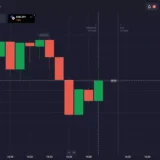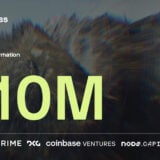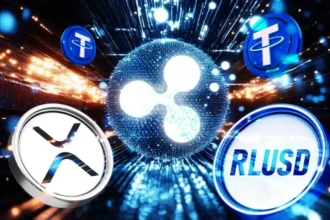Ripple’s XRP Ledger continues to attract scrutiny over its modest on-chain activity, despite the company’s broad network of over 300 financial partnerships worldwide. This disconnect between Ripple’s global reach and the relatively low daily transaction volume on XRPL has become a pressing topic across the digital asset space.
According to Ripple CTO David Schwartz, the problem lies in institutions’ reluctance, the legality issue, and the absence of approved compliance solutions for on-chain finance. Schwartz’s detailed description of the complexity of incorporating blockchain infrastructure in regulated financial activities explains the complexity.
Institutions have historically favored off-chain settlements, and the leading cause is the compliance issue. Schwartz declassified that even Ripple does not use its decentralized exchange to make payments due to the inability to verify the liquidity sources. Institutions are wary of not knowing whether liquidity may arise out of sanctioned institutions.
Nevertheless, this disparity can be reduced in the near future. Schwartz affirmed that Ripple develops the permissioned realms to allow users to be verified on-chain. This flow, as he mentioned, may increase the speed of institutional engagement after legal and compliance are taken care of.
XRP’s Role as a Bridge Currency in a Multi-Stablecoin World
The other key issue brought up was the relevance of XRP in a market currently ruled by stablecoins. Schwartz retorted that the usefulness of XRP as a bridge asset still holds, especially in a multicurrency financial system.
He continued that no specific stablecoin can support every jurisdiction with this, and therefore, having a neutral currency such as XRP can be flexible in different regions and the various fiat systems.
The volatility of XRP can be perceived as its weakness, but on some occasions, it can be an advantage. As noted by Schwartz, some investors and institutions would rather consider assets that have the potential to grow, though this may come with short-term risks.
He added that the liquidity benefit felt due to the possession of a bridge-asset, such as XRP, lets one trade in a wide variety of pairs without the necessity to hold various assets at low concentrations.
He also discussed the increasing popularity of big financial institutions creating their blockchains. Schwartz compared this with Circle’s use of USDC on numerous public chains. He stated that liquidity, access, and adoption are greater on open networks, which cannot be achieved with private chains.
Geopolitical Concerns and Regulatory Trust Remain a Hurdle
Questions around Ripple’s U.S. base and how it affects trust from global players were also addressed. Schwartz made clear that XRPL is not bound to any jurisdiction on its part. Although Ripple is based in the USA, the corporation has independently licensed entities in several countries to deal with international counterparts.
Nevertheless, there are still geopolitical constraints. Some of the areas where sanctions have been imposed will remain barred by compliance policies.Schwartz agreed that it would take time before all governments adopt Ripple’s infrastructure for cross-border transactions, at least in the short term.
He noted that the transition may be slower due to oversight being concentrated in a U.S.-based firm. However, Ripple remains interested in gaining trust in the open areas where it can be adopted and compliance standards exist.
Conclusion
The statements by David Schwartz also indicate the problems that Ripple has to overcome when it comes to transforming the XRPL into a globally known environment and a full-fledged on-chain settlement layer. The technology exists, but its everyday use requires solving the problem of compliance and creating tools that do not contradict institutional standards. Now in its development stages, Ripple could fill the gap and open up new utility prospects in financial aspects across the globe.
Also Read: Why Is XRP Going Up? Key Reasons Explained










